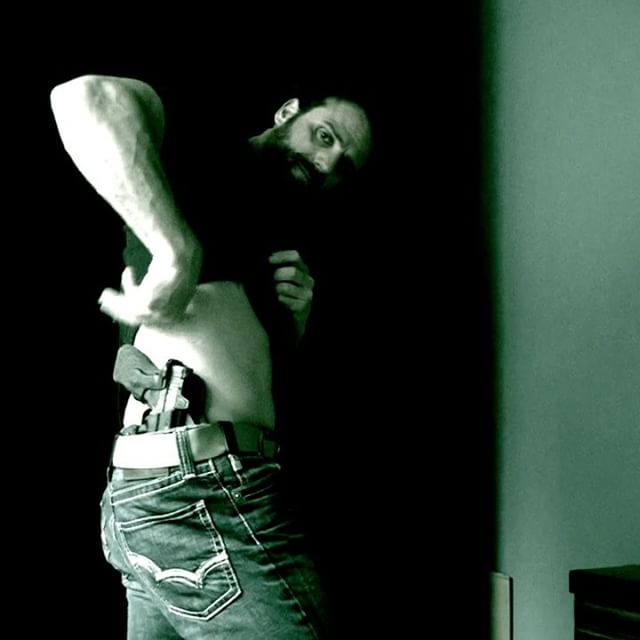I see alot of people who go to the range and shoot their CCW in the same fashion that they would shoot a target pistol. This is a terrible practice to make a habit of. I understand that people think that shooting the gun slow will give them time to get used to the trigger and recoil of the pistol, as well as evaluate the mechanical accuracy of the pistol before advancing to shooting faster and such. This is a terribly flawed process in my opinion.
https://youtu.be/pZ0bdLLeTmI
PRIORITIZATION
If we look at the standard distance we will most likely use our pistols at, 7 Yards and under, you will hopefully see that gauging the ACCURACY of the PISTOL is not going to be too important right out of the box. You may find it out during a proper break in anyways.
First and foremost is that you need to get in the mindset of what you are gonna be doing when you draw the pistol. Your focus should be on the target and what is going on around you, not how the trigger and the grip FEELS. Your mission when using your CCW is to dispatch the threat as efficiently as possible, and that requires multiple shots to the right area. This means that the only consideration you should be having, in regards to the firearm, is you having a fast trigger pull and a steady grip that allows your pistol to stay secure in the hand. This does not mean that you try to FEEL the trigger, but rather that you apply fast pressure to the trigger without sympathetically moving the other fingers in your hand.
Let us be real here, you jerk the trigger when shooting fast, and you probably end up smashing the trigger really hard too. The only time that is detrimental to your accuracy is when you use other fingers for leverage. This is when your groups will start to take on the form of a distant shotgun pattern. You can train your trigger finger to operate the trigger without using other fingers, but that takes time. For this reason, I recommend getting snap caps and practicing a fast trigger pull without moving the sights. Just remember that if you feel that you have mastered this, apply it to your live fire. Personally, I find that double action triggers allowed me to master this much more than striker fired triggers ever did.
Don’t adopt a slow is smooth mindset just because you have live ammo. This basically wastes your training and practice time. If you can do it dry, you can do it on a live range. Don’t waste ammo and money testing something you haven’t perfected in dry fire. This especially goes for pistol draw shots and adapting to new triggers.
AREA OF FOCUS
When you go to the range and use the ammo you spent your hard earned money on, you want to focus on things that hopefully only need confirmation. The hardest thing to practice is delivering quick followup shots on target. I like to practice with bursts no smaller than 5 rounds. Double taps can be flukes, and triple taps can be deceptive. Just like grouping to confirm a zero, 5 rounds will begin to tell the tale of what you are doing during the course of fire.
During this confirmation, you must remember that you are accountable for all shots and you must be taking account of the position and alignment of your sights at all times before taking the shot. This does not mean to stare at them though. I say ACCOUNTABLE because as long as you can tell that they are on target and you can be sure of the bullets path, you should be good to go. Other than that, you should be good to go.
LAST WORDS
I always recommend shooting at least 1,000 rounds through any small pistol and 2,000 rounds through full sized pistols. I call this the breakage amnesty period. During this time, any defective parts will typically show themselves. Rapid fire and getting the guns hot in a hurry will further help in exposing weaknesses. If your pistol makes it through this round count without a part breaking, they should be good to go for at least the rest of the established service life whether that is 5,000 or 10,000 rounds. Other than this little tidbit of advice, all I can say is it is your responsibility to stay in reality and keep yourself practiced, versatile, and ready.
[amazon_link asins=’B009KYQY16,B0020HP40W,B06XRQ1S5Z,B002HSMCPE,B0014VS55Q,B00L7SKD9C’ template=’ProductCarousel’ store=’spoup-20′ marketplace=’US’ link_id=’b5c6941d-4bea-11e7-9557-e17385b048b4′]
*The views and opinions expressed on this website are solely those of the original authors and contributors. These views and opinions do not necessarily represent those of Spotter Up Magazine, the administrative staff, and/or any/all contributors to this site.
[jetpack_subscription_form]
Brought to you by the dudes at Spotter Up


